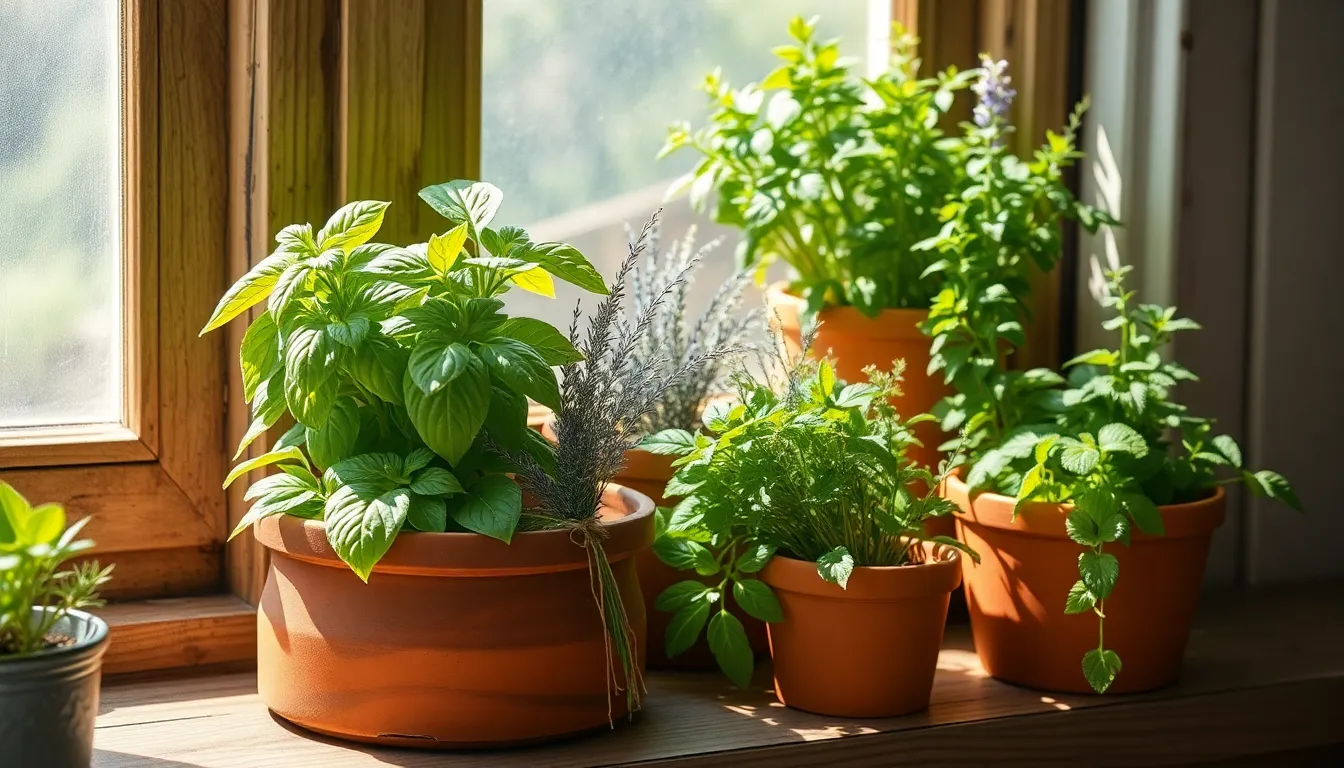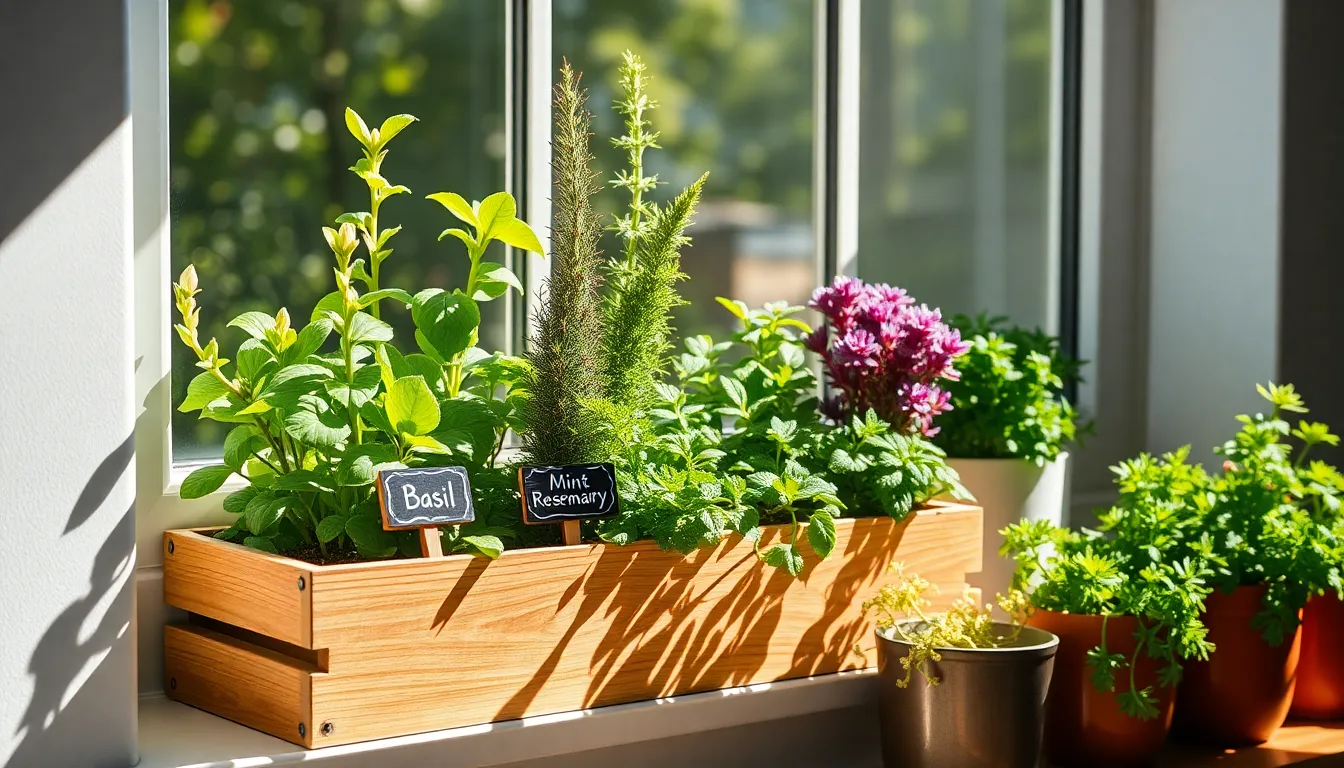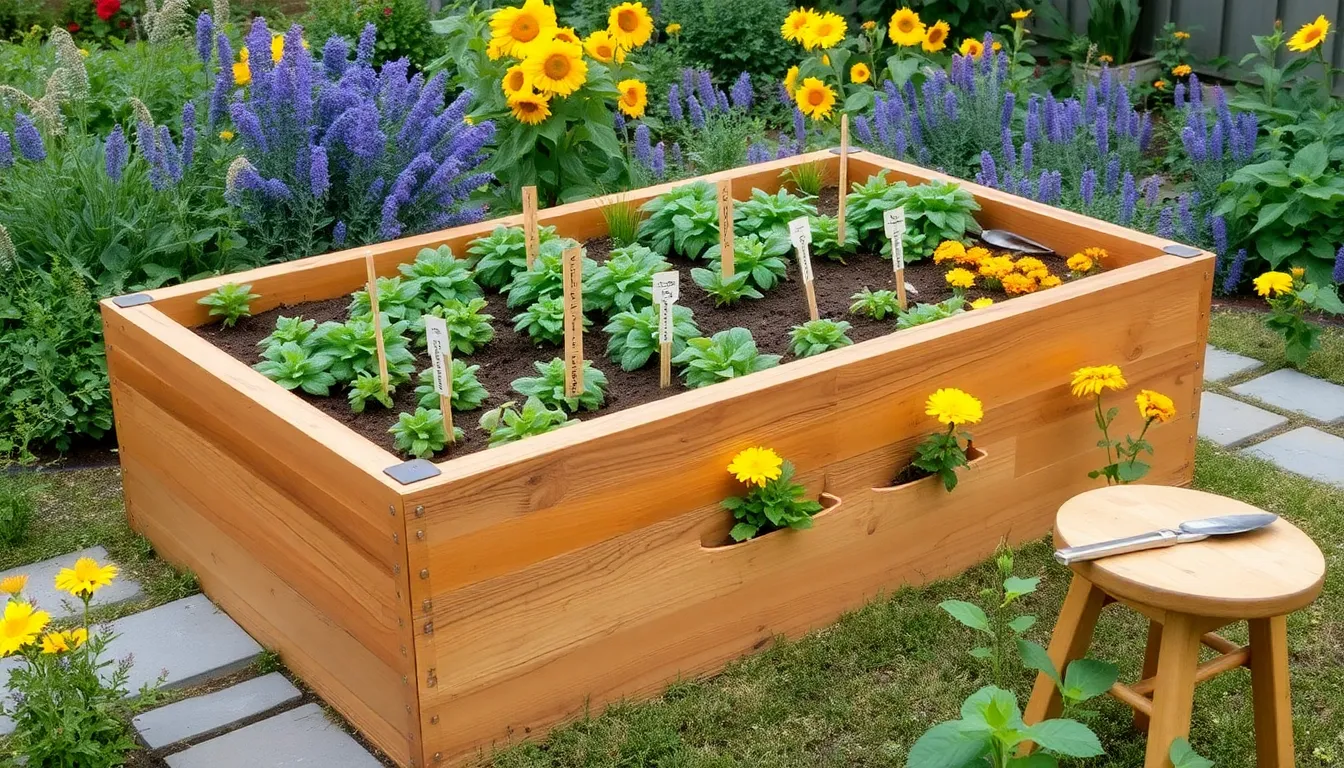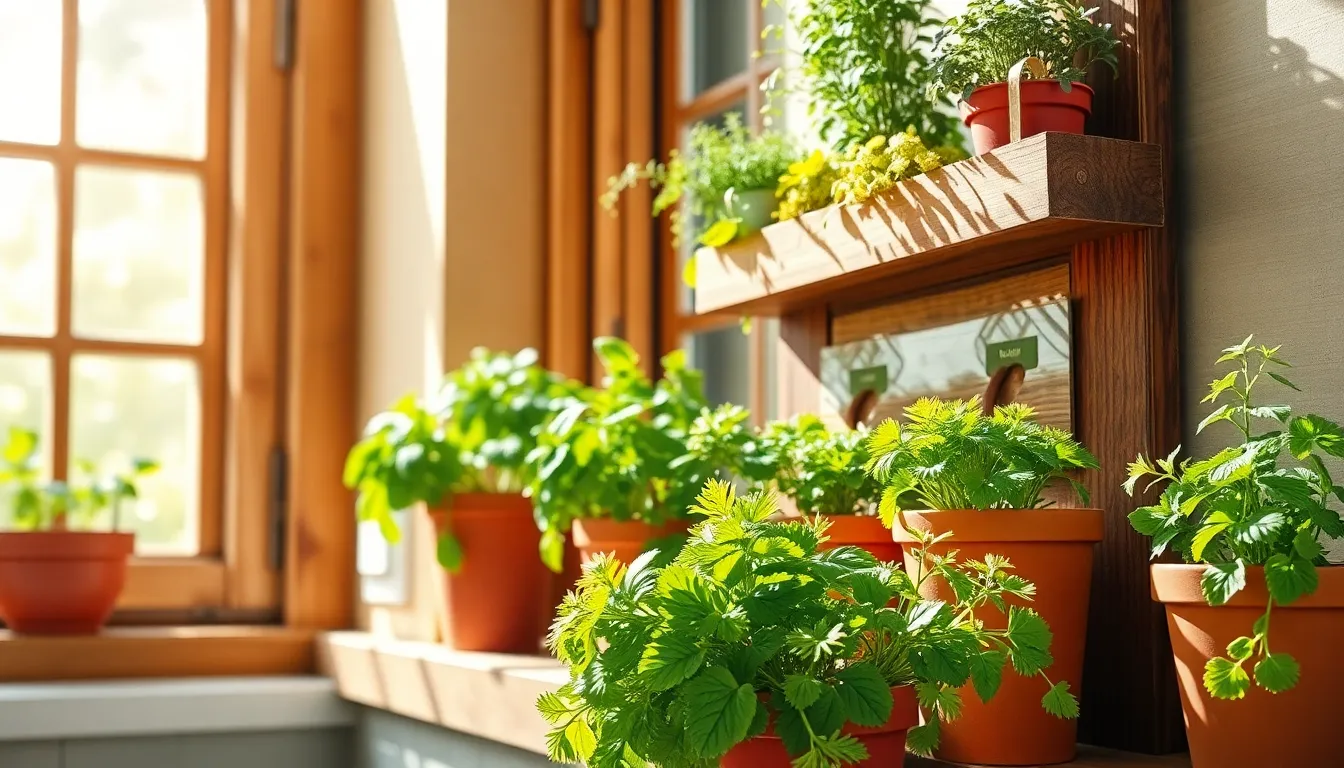Imagine stepping into your kitchen and plucking fresh, aromatic basil or fragrant mint right from your windowsill, no matter the season. Growing herbs indoors year-round isn’t just a delightful hobby; it’s a rewarding way to enrich your culinary adventures and enhance your indoor space with vibrant greenery. Whether you’re a beginner hoping to add a touch of nature to your home or an experienced gardener eager to explore indoor growth, this guide will equip you with the essential strategies and tips to cultivate a thriving indoor herb garden.
For many, the thought of maintaining an indoor herb garden might seem daunting, but the reality is both simple and satisfying. By mastering the basics of light, water, and soil requirements, you can transform a small corner of your home into a lush mini-garden. In this article, you’ll discover the secrets to choosing the right herbs, creating optimal growing conditions, and troubleshooting common challenges. Let’s embark on this green journey together, ensuring that your indoor herb garden flourishes with health and vitality, regardless of the weather outside.
Select Suitable Herb Varieties
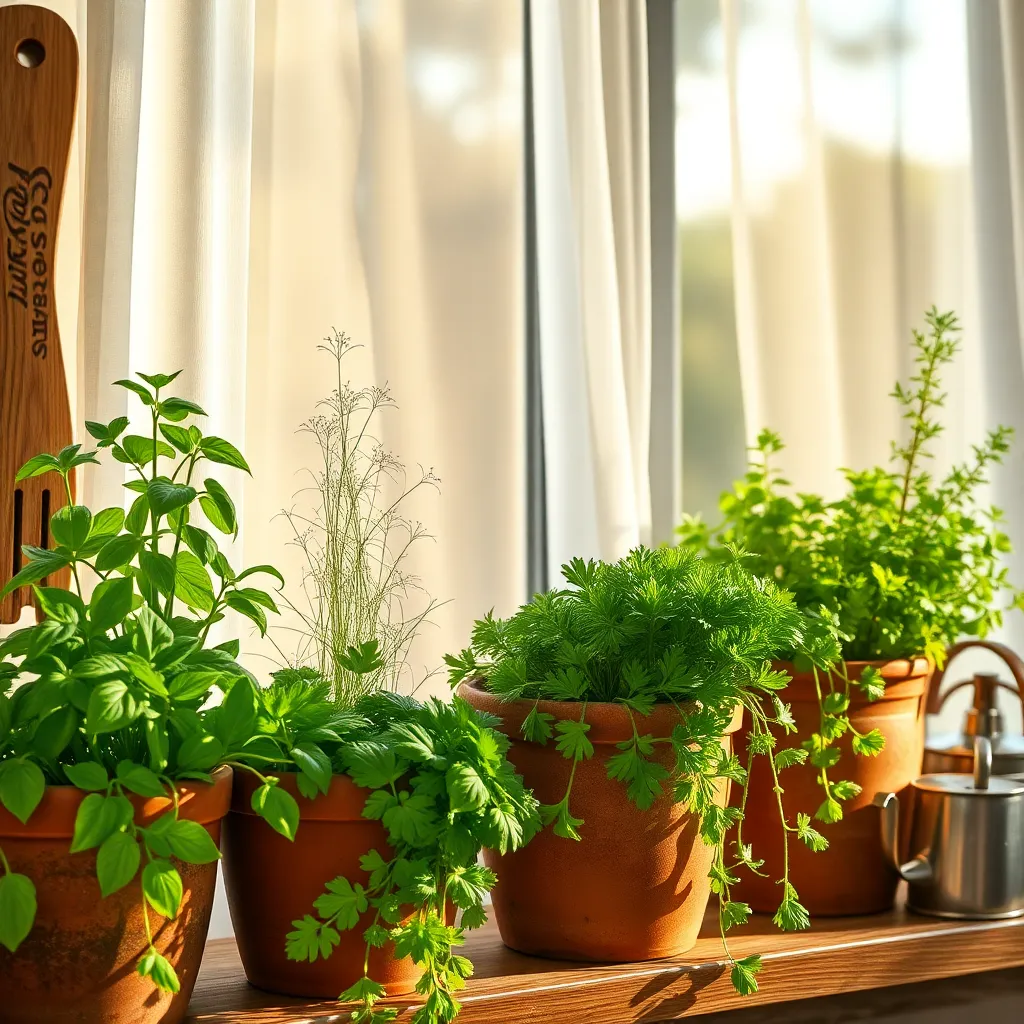
When choosing herbs for indoor growing, it’s important to select varieties that thrive in confined spaces and have manageable growth habits. Basil, cilantro, and chives are excellent options for beginners because they require minimal care and adapt well to indoor conditions.
Consider the light requirements of each herb to ensure successful growth. Herbs like rosemary and thyme prefer bright, sunny windowsills, while mint can tolerate lower light levels, making it versatile for various indoor spots.
Additionally, consider planting herbs that complement each other in terms of care and culinary use. For instance, grouping parsley, dill, and cilantro allows you to maintain a consistent watering schedule, as they all appreciate evenly moist soil.
Advanced gardeners might explore growing more challenging herbs such as lemongrass or bay laurel. These varieties require specific conditions, like lemongrass needing consistently warm temperatures and bay laurel preferring well-drained soil with occasional misting to thrive indoors.
Prepare Appropriate Containers
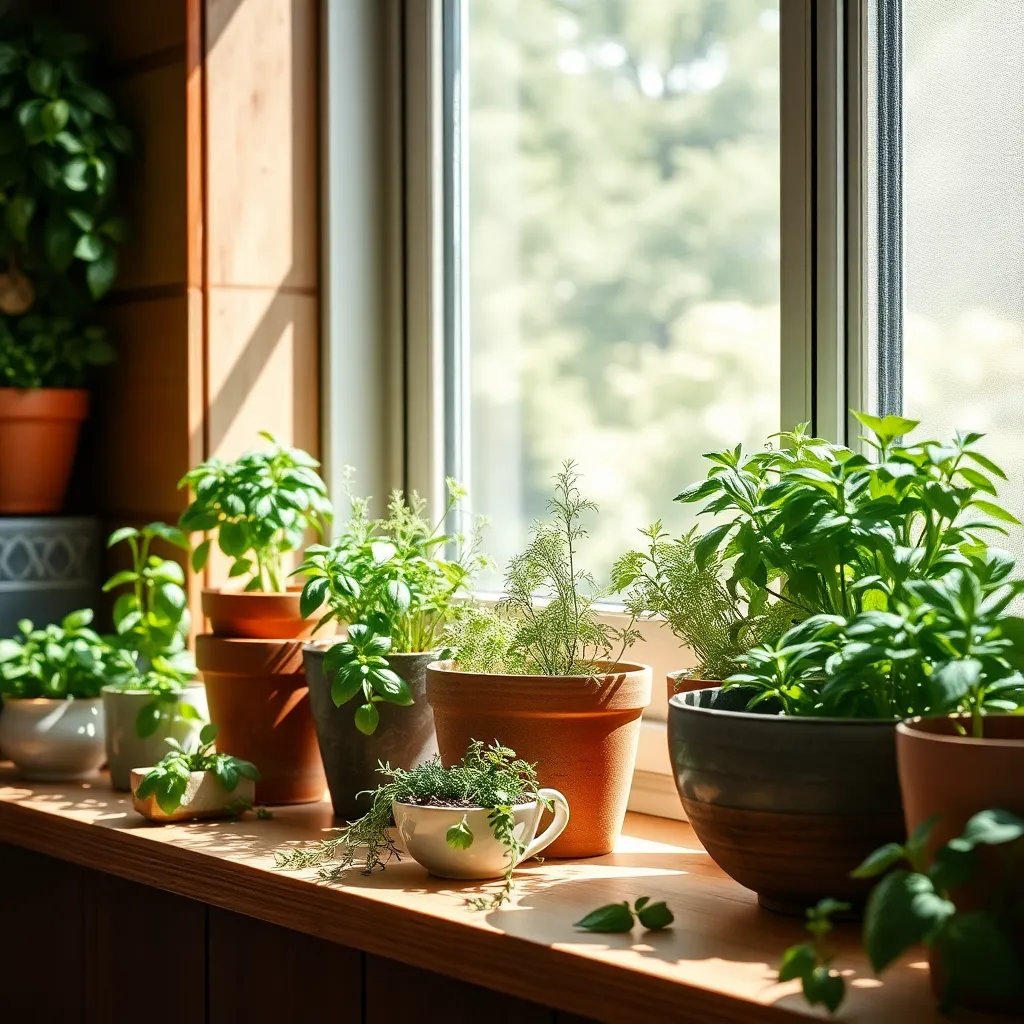
Choosing the right containers is crucial for successful indoor herb gardening. Opt for pots that have adequate drainage holes to prevent waterlogged soil, which can lead to root rot.
Consider the size of the container based on the type of herb you are growing. Smaller herbs like thyme or chives can thrive in pots around 6 inches in diameter, while larger herbs like basil or mint might need 8 to 10-inch pots.
Material also plays a role in the health of your herbs. Terracotta pots are excellent for herbs because they are porous and allow air and moisture to circulate, but they may dry out faster than plastic or glazed pots.
For advanced gardeners looking to optimize their indoor space, consider using self-watering containers. These can provide a steady supply of moisture to your herbs, which is especially useful for plants that require consistent watering, like basil and cilantro.
Ensure Optimal Light Conditions
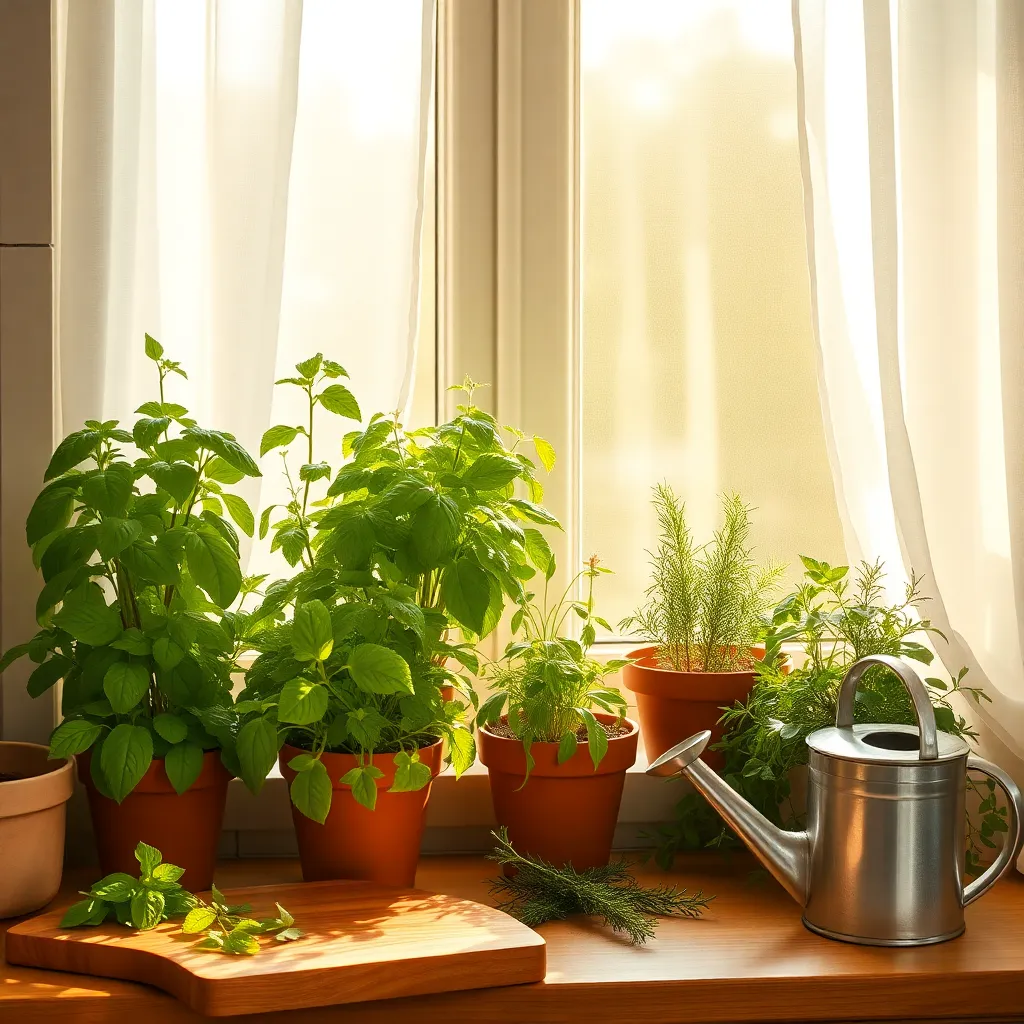
Lighting plays a crucial role in the success of growing herbs indoors year-round. To begin, place your herbs near a south-facing window where they can receive at least six hours of natural sunlight daily.
If natural light is insufficient, consider using grow lights to supplement it. Full-spectrum LED grow lights are an excellent option, as they mimic natural sunlight and help your herbs thrive.
Position your grow lights about 6-12 inches above the herbs, adjusting based on plant response. It’s important to provide 12-16 hours of artificial light per day, especially during the darker months.
Regularly rotate your plants to ensure even light exposure and prevent leaning. This simple practice encourages uniform growth and prevents one-sided development.
Water and Fertilize Consistently
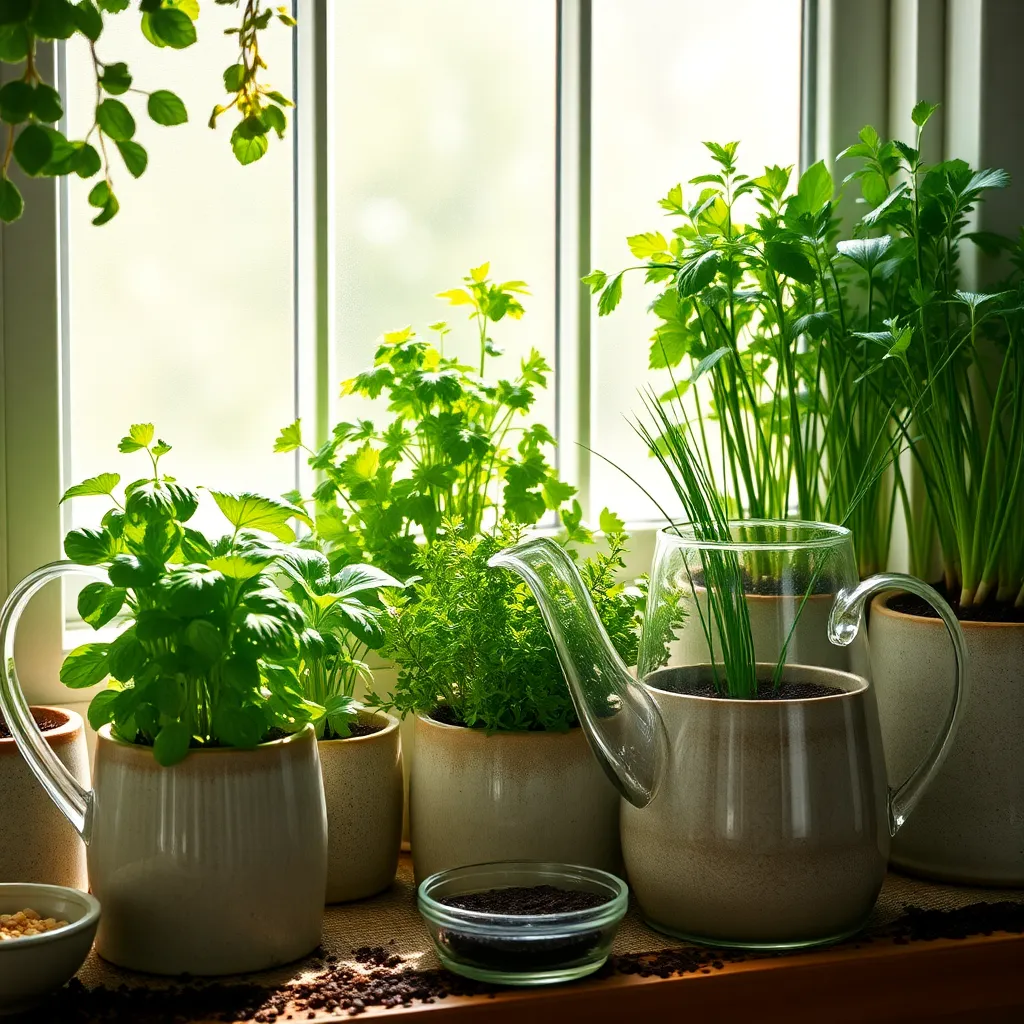
To grow herbs indoors successfully, it’s crucial to water them consistently without overdoing it. Most herbs prefer well-draining soil, so check the top inch of soil with your finger; if it feels dry, it’s time to water.
Using a pot with drainage holes is essential to prevent root rot, a common issue with overwatering. Consider investing in a moisture meter to help determine when your plants need water, especially in varying indoor conditions.
Fertilizing your herbs is another key to maintaining healthy plants indoors. Use a balanced, water-soluble fertilizer every four to six weeks to provide essential nutrients.
For those who want to get more advanced, try using an organic compost tea every month, which can boost microbial life in the soil and improve plant health. Be mindful of each herb’s specific needs, as some, like basil, might require more nutrients than others, such as thyme.
Remember that the frequency of watering and fertilizing can change with the seasons, even indoors. During winter months, herbs typically require less water and fertilizer due to slower growth rates.
Prune and Harvest Regularly
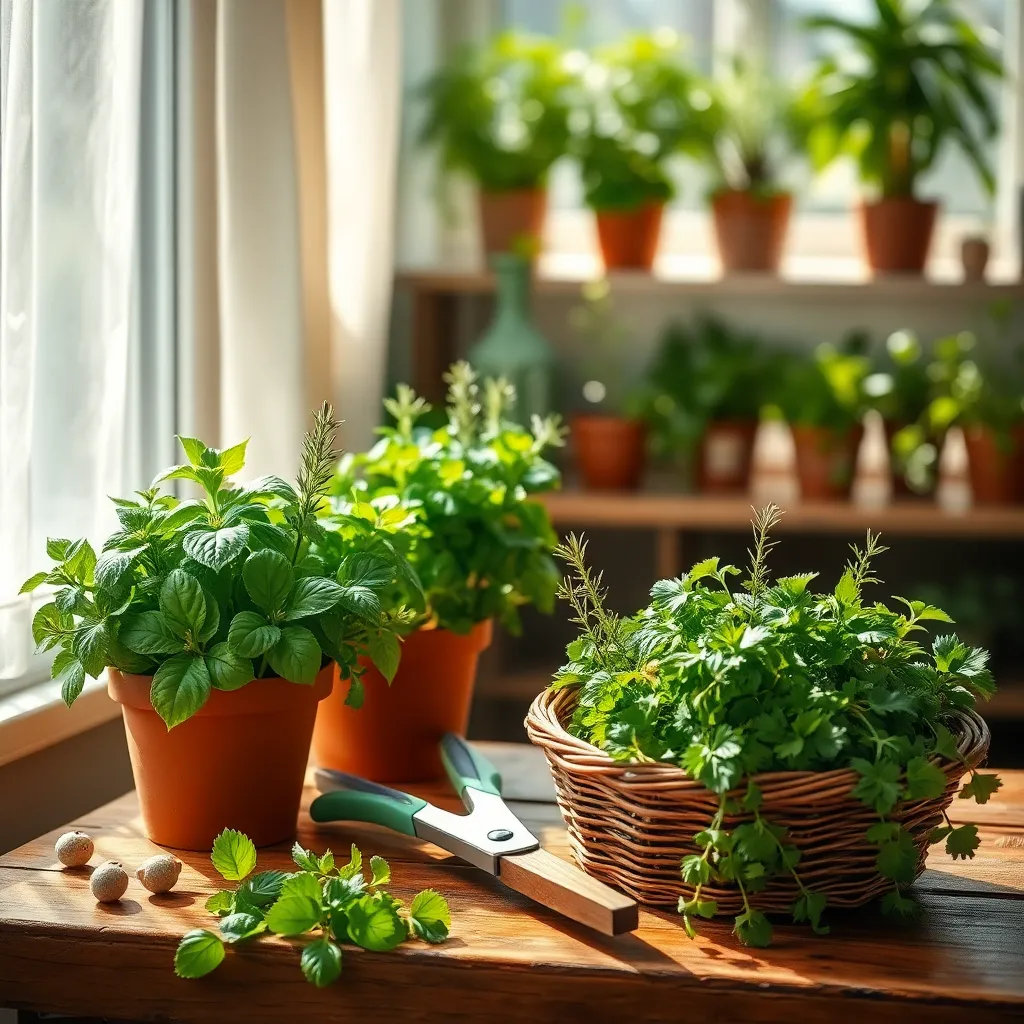
Regular pruning is essential for maintaining the health and productivity of your indoor herb garden. By trimming your herbs, you can encourage new growth and prevent the plants from becoming too leggy.
When pruning, use sharp scissors or pruning shears to make clean cuts, which helps the plant heal faster. Focus on removing dead or yellowing leaves and cutting just above a set of leaves to ensure that new shoots will develop in that spot.
Harvesting your herbs frequently is also crucial to keep them thriving all year round. As a general rule, harvest when the plant reaches about 6 inches in height, taking care not to remove more than one-third of the plant at a time.
For those growing basil or mint, pinching back the tips regularly will not only keep the plants bushy but also enhance the flavor. Advanced gardeners can try rooting these cuttings in water to propagate new plants, expanding their herb collection with minimal effort.
Conclusion: Growing Success with These Plants
In nurturing your indoor herb garden, you’re not just growing plants; you’re cultivating a harmonious relationship with nature and your living space. We’ve explored five key relationship concepts: creating a balanced environment, ensuring consistent communication through regular care, adapting to seasonal needs, practicing patience and understanding, and celebrating growth and milestones. These principles mirror the foundation of any thriving relationship, whether with plants or people.
As you embark on this green journey, take a moment today to choose a new herb to introduce into your home. This small step can invigorate your space and nurture your sense of connection to the natural world.
Remember, the success of your indoor garden reflects the success of your relationships—both require attention, dedication, and a little bit of love. Save or bookmark this article to keep these valuable insights at your fingertips as you continue to grow, both as a gardener and a partner.
Looking ahead, by applying these nurturing principles, you’ll find that your relationships, much like your herb garden, will flourish, yielding rich rewards and endless possibilities. Embrace the growth and relish the journey.

